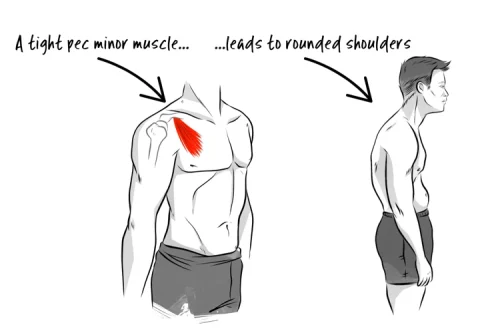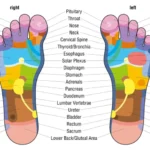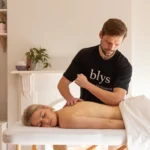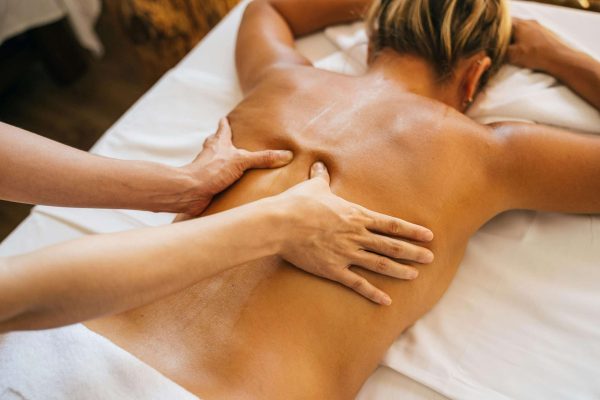Do you feel tension and stress in your shoulder blade? Do you want to find relief from it? If yes, then you have come to the right place. In this article, we will discuss how to massage shoulder blade and the techniques to relieve tension and stress in that area. We will provide you with simple steps that you can do at home to relieve your shoulder blade tension and stress. So, let’s get started and learn how to massage shoulder blade.
Table of Contents
Benefits of Shoulder Blade Massage
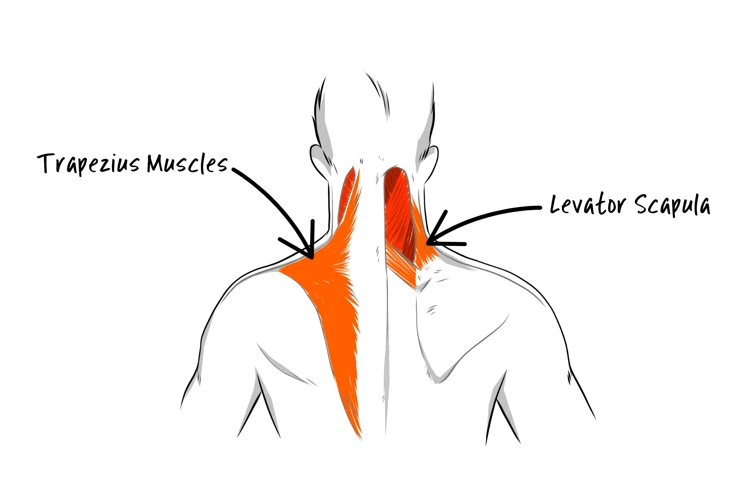
- Reduces tension and stress: Massaging the shoulder blades helps to relax tight muscles, relieving tension and stress.
- Improves circulation: Massaging the area improves circulation of blood and lymph, promoting healing and reducing inflammation.
- Increases range of motion: Massaging the shoulder blades helps to loosen tight muscles and improve flexibility, resulting in an increased range of motion.
- Relaxes the mind: Massaging the shoulder blades can help to relax the mind and body, and improve mental clarity.
- Provides pain relief: Massaging the shoulder blades can help to reduce pain and stiffness in the area, providing relief from aches and pains.
Shoulder blade massage is an effective way to reduce tension and stress, improve circulation, increase range of motion, relax the mind, and provide pain relief. By learning how to massage your own shoulder blade, you can reap the benefits of this therapeutic technique without needing to visit a professional masseuse.
Techniques for Shoulder Blade Massage
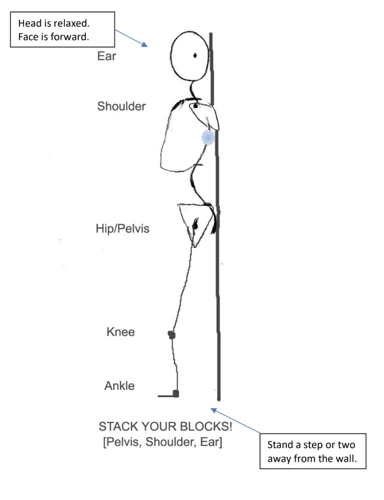
Self-Massage of the Shoulder Blade
Self-massage is a great way to reduce tension and stress in your shoulder blades. To begin, take a deep breath and relax your shoulders. Place one hand on each shoulder blade and use your fingers to gently dig in, stroking and pressing in the area. Move your hands in circles, pressing and kneading the muscles. You can also use your thumbs to press into the muscles and work out any tight knots.
Massage of the Shoulder Blade by a Partner or Professional
Having a partner or professional massage your shoulder blades can help to relieve tension and stress. Start by lying on your back. Your partner or masseuse can start by applying gentle pressure to the muscles and then gradually increase the pressure. They can use their hands, knuckles, or elbows to massage the area. The massage should focus on the muscles around the shoulder blades and the upper back. For best results, it is recommended to have a massage every one or two weeks.
Using these techniques can help to reduce tension, stress, and pain in your shoulder blades. Whether you choose to self-massage or seek out a professional, regular massage of the shoulder blades can result in increased flexibility and reduced pain.
Shoulder Blade Massage Preparation
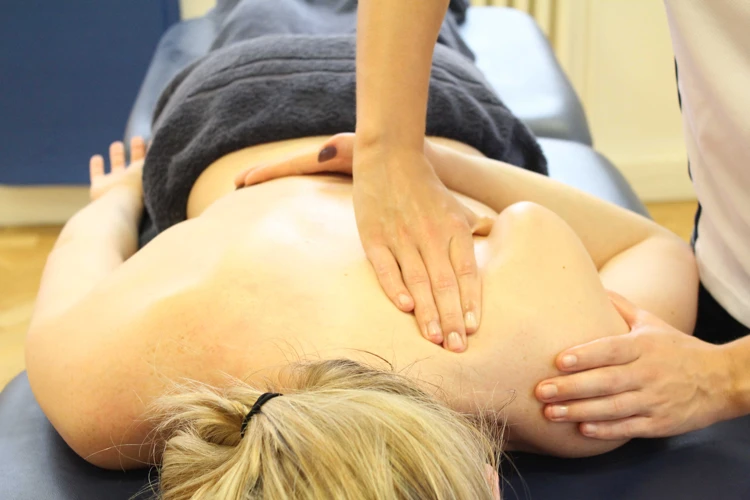
| Step | Instructions |
|---|---|
| 1 | Choose a quiet, comfortable place for the massage. |
| 2 | Apply a few drops of massage oil on the shoulder blades. |
| 3 | Have the person lie down on their back. |
| 4 | Place a small pillow or folded towel under the person’s head. |
| 5 | Gently massage the muscles of the shoulder blades with your fingertips. |
| 6 | Use long, soothing strokes. |
When finished, encourage the person to take a few deep breaths and relax. Make sure they are comfortable before continuing.
How to Massage Shoulder Blade: Step-By-Step Guide
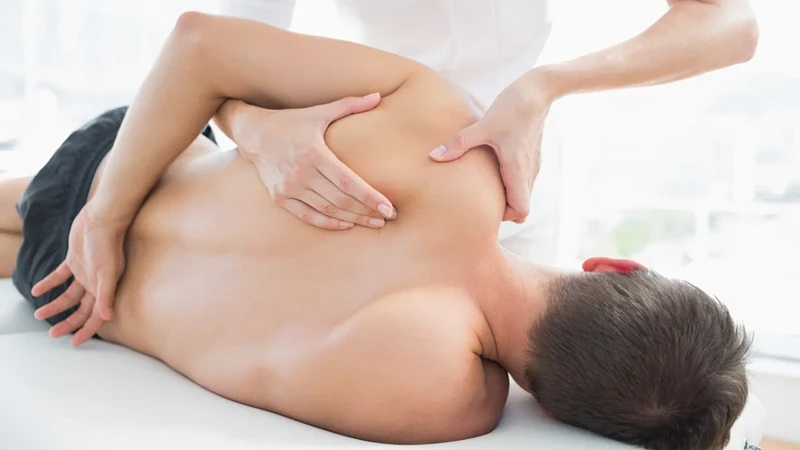
Step 1: Warm Up Your Shoulder Blade
Start by applying gentle pressure to the shoulder blade and make small circular movements. This will help to relax the muscles and make them more receptive to the massage.
Step 2: Apply Pressure to the Shoulder Blade
Using your fingers or thumbs, apply firm pressure to the shoulder blade either in a circular motion or with a back and forth motion. Be sure to use a light to medium pressure to avoid overexertion.
Step 3: Perform Circular Massage Movements
Using your fingertips, start to make circular motions across the shoulder blade. Make sure to keep the pressure consistent and to move your fingers in a slow and rhythmic manner.
Step 4: Use Long Strokes
Once you have completed the circular massage motions, start to use long strokes across the shoulder blade. Keep the pressure light to medium and use a gentle back and forth motion.
Step 5: End with Gentle Pressure
When you have finished massaging the shoulder blade, end with gentle pressure. This will help to relax the muscles and provide relief from tension and stress.
Tips for Shoulder Blade Massage
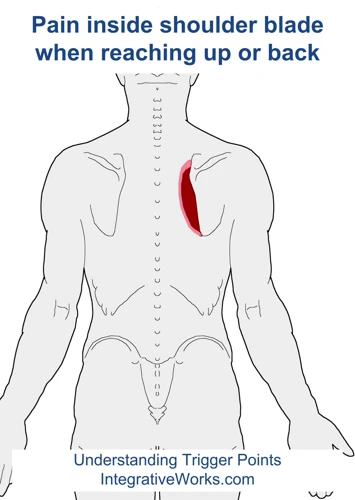
- Ease into it: Start with gentle, circular motions and gradually increase pressure as the muscles relax.
- Pay attention to the muscles: Focus on the muscles around the shoulder blade, such as the trapezius, the rhomboids and the levator scapulae.
- Hit the lower back: Don’t forget to massage the lower back area near the shoulder blades, as this can help relieve tension in the shoulder blades.
- Add some heat: Adding a heating pad or hot towel to the area can help the muscles relax even more.
- Finish with a stretch: Complete your massage with a gentle stretch of the shoulder blades to further reduce tension.
Shoulder Blade Massage Preacautions
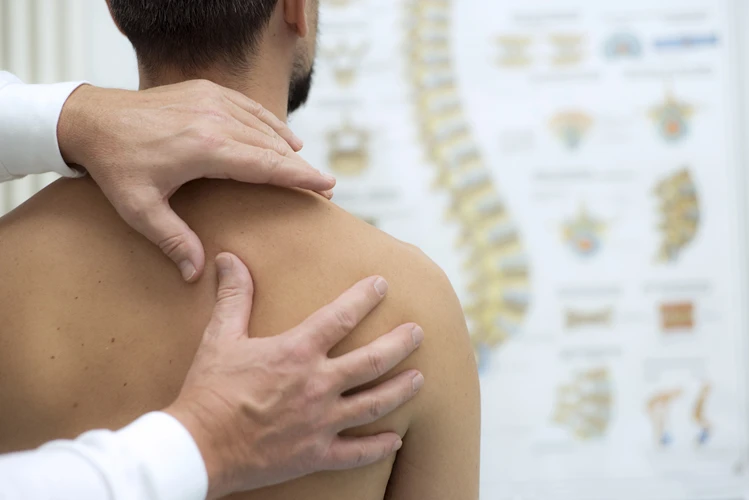
| Caution | Description |
|---|---|
| Don’t massage too hard | Massage your shoulder blades lightly and avoid applying too much pressure. |
| Avoid massaging injured areas | Do not massage any area that is inflamed or has an injury. |
| Avoid direct contact with bone | Be careful not to apply pressure directly on the bone. |
| Avoid massaging if you have a fever | Do not massage your shoulder blades if you are running a fever. |
| Avoid massaging if you are pregnant | Pregnant women should avoid massaging their shoulder blades. |
| Avoid massaging if you have a skin condition | Do not massage your shoulder blades if you have any kind of skin condition. |
Alternatives to Shoulder Blade Massage
- Acupressure – Applying pressure to specific acupoints on the shoulder blade can help relieve tension and stress. This can be done with fingers, knuckles or even a tennis ball.
- Yoga & Stretching – Stretching the shoulders and upper back can help to relieve tension, improve posture, and reduce stress. Doing yoga regularly can also help to improve flexibility and strengthen the muscles.
- Self-Massage – Using a foam roller or massage ball can be a great way to give yourself a massage. This can help to release tension in the shoulder blades and improve flexibility.
- Heat Therapy – Using a heating pad or hot water bottle can help to relax the muscles and reduce tension in the shoulder blades. This can be done before or after a massage for extra relief.
Frequently Asked Questions
Is it Safe to Massage My Shoulder Blades Myself?
Yes, it is safe to massage your shoulder blades yourself. Massaging your shoulder blades can help you to release tension and stress, and can improve your postural alignment. Self-massage can be done in the comfort of your own home, and can be enjoyed as often as you like. Here are some simple steps you can take to massage your shoulder blades:
- Lie on your back on a bed or a flat surface. Make sure that your head and neck are supported, and your back is in a comfortable position.
- Place your palms over your shoulder blades and apply gentle pressure. Use a circular motion to massage your shoulder blades, starting at the center and working your way outwards.
- Next, grab your shoulder blades with your hands and move them up and down. You can also use your palms to press your shoulder blades and move them in different directions.
- Lastly, use your fingers to massage your shoulder blades in small circles. This will help to release tension and stimulate the muscles.
Remember to take your time and be gentle with yourself. If you experience any discomfort, stop immediately and consult your doctor.
How Often Should I Massage My Shoulder Blades?
It depends on the severity of your tension and stress:
- If your tension and stress is mild, massage your shoulder blades once a week.
- If your tension and stress is moderate, massage your shoulder blades twice a week.
- If your tension and stress is severe, massage your shoulder blades three times a week.
You can also adjust the frequency of your massage according to your lifestyle:
- If you are an athlete, massage your shoulder blades daily.
- If you are experiencing a lot of stress, massage your shoulder blades twice or three times a week.
- If you are leading a sedentary lifestyle, massage your shoulder blades twice a week.
What are the Benefits of Shoulder Blade Massage?
Shoulder blade massage can improve posture, reduce muscle tension, relieve stress, and improve joint mobility. It can also help reduce the pain and discomfort associated with neck, shoulder, and upper back injuries. Regular shoulder blade massage can help improve circulation and reduce inflammation in the affected area. Additionally, it can help reduce fatigue, improve sleep, and reduce anxiety.
What should I do if I experience pain when massaging my shoulder blades?
Stop the massage. If you experience pain or discomfort when massaging your shoulder blades, it is best to stop immediately and reassess the situation.
Consult a doctor. If the pain persists after discontinuing the massage, it is best to consult a doctor to help diagnose the source of the pain.
Invest in a foam roller. A foam roller is an inexpensive tool that can be used to massage your shoulder blades without causing any pain or discomfort.
Change the technique. If you are using your hands to massage your shoulder blades, try using different techniques such as kneading or light tapping.
Choose a different massage. If the massage you are using is causing pain, try a different type of massage such as Swedish, deep tissue, or Shiatsu.
Go slow and gentle. Start with light pressure and gradually increase the pressure as your body adjusts.
Conclusion
Massaging your shoulder blades can help reduce stress and tension, and can be done with simple steps. First, locate the points of tension and use circular motions to massage them. Use firm pressure and make sure to be gentle with your skin. Then, incorporate stretching and deep breathing to help release the tension. With regular practice, you can find relief from pain and tension in your shoulder blades.
📚References
⚠️ Disclaimer:
This article is for informational purposes only and does not constitute medical advice. Always consult with a licensed healthcare provider or certified massage therapist before beginning any new treatment, especially if you have pre-existing health conditions or concerns.

